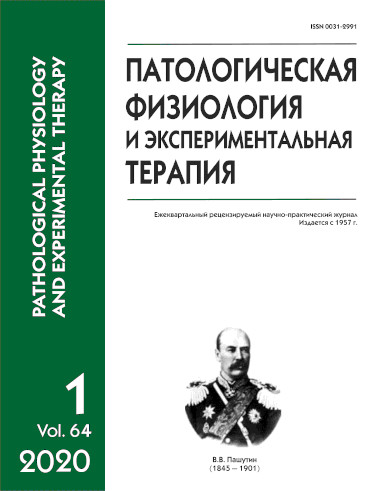Manifestations of experimental bullous keratopathy and the effectiveness of cell therapy
Abstract
Introduction. Bullous keratopathy is a serious, progressive disease, which involves chronic edema of the corneal tissue associated with a significant decrease in visual acuity and severe pain. Current treatment of corneal edema includes conservative and surgical methods. Keratoplasty is a radical treatment; however, this method is associated with a high risk of purulent complications and graft rejection in the postoperative period. Cell therapy is an alternative to the radical surgery. Among cell populations, the most widely used are mononuclear white blood cells producing more than 120 types of biologically active substances, such as cytokines. The aim was to study features of the development of experimentally-induced bullous keratopathy and to evaluate the effectiveness of treatment by layering a suspension of autologous mononuclear leukocytes on the inner surface of pathologically altered cornea. Methods. The study was performed on 54 Wistar male rats. At the 1st stage of experiment, bullous keratopathy was modeled on all animals by damaging and removing the corneal endothelium. At the 2nd stage of experiment the animals were divided nto the main group and the comparison group based on the treatment method. In the main group (n=24), a suspension of autologous mononuclear leukocytes was layered on the damaged surface of the cornea; in the comparison group (n=24, Korneregel was instilled three times daily and Balarpan was instilled twice a day. Results. The development of experimental bullous keratopathy was confirmed by external examination, optical coherence tomography of the cornea, and light microscopy. Mechanical damage and removal of the corneal endothelium was associated with secondary alterations in all corneal layers with a rapid (within 2 weeks) development of bullous keratopathy. The new therapy tested on the model of corneal bullous keratopathy proved to be highly effective. The suspension layering provided a rapid (13.0 times faster than in comparison group) decrease in corneal hydration by day 21 of the treatment, improved the structure of anterior corneal epithelium, and decreased its thickness (1.3 times) by day 21 of follow-up. Conclusion. The study results obtained with morphological and instrumental methods confirmed the effectiveness of layering the suspension of autologous mononuclear leukocytes on the damaged inner surface of the cornea in the treatment of bullous keratopathy.






